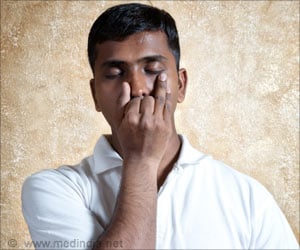Yoga increases the levels of Gamma-amino butyric acid (GABA) in short-term. However, practicing yoga for one whole week increases the levels of GABA that could help in decreasing the symptoms of depression.
- Yoga increases Gamma-amino butyric acid (GABA) levels, which helps in treating depressive symptoms
- GABA is an amino acid that acts as a neurotransmitter in the central nervous system
GABA is an amino acid that acts as a neurotransmitter in the central nervous system and has been associated with decreased depressive symptoms.
A group of 30 clinically depressed patients were randomly divided into two groups. Both groups engaged in lyengar yoga and coherent breathing with the only difference being the number of 90 minute yoga session and home sessions in which each group participated.
Over three months, the high-dose group (HDG) was assigned three sessions per week while the low-intensity group (LIG) was assigned two sessions per week.
Participants underwent magnetic resonance imaging (MRI) scans of their brain before the first yoga session and after the last yoga session. They also completed a clinical depression scale to monitor their symptoms.
"The study suggests that the associated increase in GABA levels after a yoga session are ’time-limited’ similar to that of pharmacologic treatments such that completing one session of yoga per week may maintain elevated levels of GABA," explained corresponding author Chris Streeter, MD, associate professor of psychiatry at BUSM.
"A unique strength of this study is that pairing the yoga intervention with brain imaging provides important neurobiological insight as to the ’how’ yoga may help to alleviate depression and anxiety. In this study, we found that an important neurochemical, GABA, which is related to mood, anxiety and sleep, is significantly increased in association with a yoga intervention," said collaborator and co-author Marisa Silveri, PhD, neuroscientist at McLean Hospital and associate professor of psychiatry at Harvard Medical School.
Source-Eurekalert
















